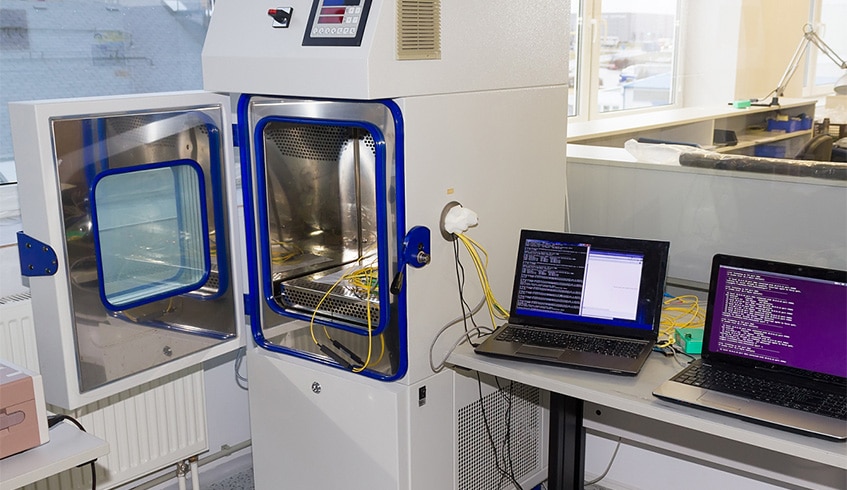Case study: Detecting product weak spots before reaching market

During the development of the home alarm system, the client requested pre-compliance environmental tests for all components of the system (alarm hub, external siren, door/window sensor and PIR sensor).
Purpose of these tests was to identify potential failures on hardware during early stage of the development.
That will give us and the client enough time to prevent potential failures in the field or during compliance (certification) tests.
Testing process included steady state tests and cyclic state tests with and without temperature change on fixed relative humidity conditions.
Which tests have been performed by our team:
- dry heat at 55ºC operational test (IEC 60068-2-2);
- cold at -40ºC operational test (IEC 60068-2-1:2007);
- temperature change operational -10ºC to 30ºC (EN 60068-2-14:2009);
- damp heat cyclic operational 25ºC to 55ºC with 93% relative humidity (EN 60068-2-30:2005);
- damp heat cyclic endurance 25ºC to 55ºC with 93%RH(EN 60068-2-30:2005);
- damp heat steady state endurance 40ºC with 93%RH (EN 60068-2-78:2013).
After each test, specimens went trough predefined reduced functional test and visual inspection.
Reduced functional tests result showed following problems:
- Alarm not triggering on temperatures below -5ºC;
- buzzer component failure.
Corrective actions performed by our team:
- adding additional capacitance on some of the IC’s output;
- create mechanical checking process in order to avoid poor cable crimping problems.
Visual inspection test result showed following problems:
- weak spots on the enclosure (moisture getting inside of the case);
- reflective surface used for LEDs illumination peeled off;
- heavy oxidation of the buzzer membrane;
- sim card holder potential failure caused by temperature oscillation and vibration.
On the you can see moisture on the PCB’s surface due to openings in the enclosure. It can cause short circuit during operation. Also, moisture can affect lifetime predictions and RF sensitivity of the device.

Reflective surface and buzzer membrane oxidation problem are shown on picture 3.

Sim card slipping can cause failure in communication with remote systems and this is a high priority problem. Picture 4 shows potential card pop out if this type of SIM card is used.

Final actions done by ARS team:
- recommended enclosure redesign;
- recommend different approach on LED illumination;
- Add membrane insulation on siren buzzer;
- recommend limitations in sim card selection.
As a conclusion we can confirm that requested environmental tests provide us the possibility to identify potential failures that may occur during product lifetime and successfully prevent them in the design phase.




